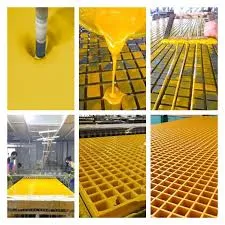
-
 Afrikaans
Afrikaans -
 Albanian
Albanian -
 Amharic
Amharic -
 Arabic
Arabic -
 Armenian
Armenian -
 Azerbaijani
Azerbaijani -
 Basque
Basque -
 Belarusian
Belarusian -
 Bengali
Bengali -
 Bosnian
Bosnian -
 Bulgarian
Bulgarian -
 Catalan
Catalan -
 Cebuano
Cebuano -
 China
China -
 China (Taiwan)
China (Taiwan) -
 Corsican
Corsican -
 Croatian
Croatian -
 Czech
Czech -
 Danish
Danish -
 Dutch
Dutch -
 English
English -
 Esperanto
Esperanto -
 Estonian
Estonian -
 Finnish
Finnish -
 French
French -
 Frisian
Frisian -
 Galician
Galician -
 Georgian
Georgian -
 German
German -
 Greek
Greek -
 Gujarati
Gujarati -
 Haitian Creole
Haitian Creole -
 hausa
hausa -
 hawaiian
hawaiian -
 Hebrew
Hebrew -
 Hindi
Hindi -
 Miao
Miao -
 Hungarian
Hungarian -
 Icelandic
Icelandic -
 igbo
igbo -
 Indonesian
Indonesian -
 irish
irish -
 Italian
Italian -
 Japanese
Japanese -
 Javanese
Javanese -
 Kannada
Kannada -
 kazakh
kazakh -
 Khmer
Khmer -
 Rwandese
Rwandese -
 Korean
Korean -
 Kurdish
Kurdish -
 Kyrgyz
Kyrgyz -
 Lao
Lao -
 Latin
Latin -
 Latvian
Latvian -
 Lithuanian
Lithuanian -
 Luxembourgish
Luxembourgish -
 Macedonian
Macedonian -
 Malgashi
Malgashi -
 Malay
Malay -
 Malayalam
Malayalam -
 Maltese
Maltese -
 Maori
Maori -
 Marathi
Marathi -
 Mongolian
Mongolian -
 Myanmar
Myanmar -
 Nepali
Nepali -
 Norwegian
Norwegian -
 Norwegian
Norwegian -
 Occitan
Occitan -
 Pashto
Pashto -
 Persian
Persian -
 Polish
Polish -
 Portuguese
Portuguese -
 Punjabi
Punjabi -
 Romanian
Romanian -
 Russian
Russian -
 Samoan
Samoan -
 Scottish Gaelic
Scottish Gaelic -
 Serbian
Serbian -
 Sesotho
Sesotho -
 Shona
Shona -
 Sindhi
Sindhi -
 Sinhala
Sinhala -
 Slovak
Slovak -
 Slovenian
Slovenian -
 Somali
Somali -
 Spanish
Spanish -
 Sundanese
Sundanese -
 Swahili
Swahili -
 Swedish
Swedish -
 Tagalog
Tagalog -
 Tajik
Tajik -
 Tamil
Tamil -
 Tatar
Tatar -
 Telugu
Telugu -
 Thai
Thai -
 Turkish
Turkish -
 Turkmen
Turkmen -
 Ukrainian
Ukrainian -
 Urdu
Urdu -
 Uighur
Uighur -
 Uzbek
Uzbek -
 Vietnamese
Vietnamese -
 Welsh
Welsh -
 Bantu
Bantu -
 Yiddish
Yiddish -
 Yoruba
Yoruba -
 Zulu
Zulu
fgd scrubber
Understanding FGD Scrubbers A Key Solution for Air Pollution Control
In recent years, air quality has become an increasingly significant concern as industrial activities and population growth continue to escalate. One of the significant contributors to air pollution is sulfur dioxide (SO2), a gas primarily released by power plants, refineries, and various manufacturing processes. To tackle this environmental challenge, Flue Gas Desulfurization (FGD) scrubbing technology has emerged as a crucial solution. This article will delve into the mechanics, benefits, and environmental implications of FGD scrubbers.
FGD scrubbers are devices designed to remove sulfur dioxide from the exhaust flue gases of fossil fuel power plants. The process involves a chemical reaction between the pollutant and a scrubbing solution, typically limestone or lime, in a controlled environment. As flue gases pass through the scrubber, they react with the alkaline scrubbing solution, resulting in the formation of gypsum or other sulfur compounds that can be safely disposed of or recycled in the construction industry.
Understanding FGD Scrubbers A Key Solution for Air Pollution Control
One of the primary benefits of FGD scrubbers is their effectiveness at reducing sulfur dioxide emissions. Studies indicate that these systems can capture up to 90% of SO2 from flue gases. The considerable reduction in SO2 emissions contributes significantly to improved air quality and helps industries comply with stringent environmental regulations. Many countries have implemented laws that require power plants and industrial facilities to install FGD technology to meet air quality standards, particularly in response to the adverse health effects linked to sulfur compounds.
fgd scrubber

Moreover, the implementation of FGD scrubbers can lead to additional environmental benefits. The reduction of SO2 not only helps mitigate acid rain, which can damage ecosystems, but also decreases the formation of fine particulate matter, a key contributor to respiratory diseases. As communities grapple with air pollution-related health issues, the deployment of FGD scrubbers provides a practical approach to enhancing public health outcomes.
Nevertheless, the installation and operation of FGD scrubbers come with challenges. One of the main concerns is the operational costs associated with the technology. Initial capital investment, ongoing maintenance, and the management of the by-products—such as gypsum—can be significant. However, many industries view these costs as an investment in sustainability and regulatory compliance, recognizing the long-term advantages of cleaner emissions and reduced health risks.
Furthermore, the management of by-products is an area that requires careful consideration. While the production of gypsum offers potential for repurposing, it necessitates systems to manage this material efficiently. The balance between utilizing waste products and ensuring they do not become a liability is a crucial aspect of FGD operation.
In conclusion, FGD scrubbers represent a vital technology in the ongoing battle against air pollution. Their ability to significantly reduce sulfur dioxide emissions not only helps industries comply with environmental regulations but also fosters healthier communities. As global demands for cleaner air intensify, the continued research and development of FGDs, along with advancements in related technologies, will play a crucial role in creating sustainable industrial practices. By investing in FGD scrubbing systems, industries can contribute to a cleaner, healthier environment, paving the way for a sustainable future. Embracing such technologies today can yield profound benefits for tomorrow’s generations.









